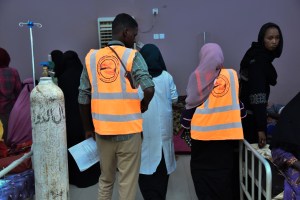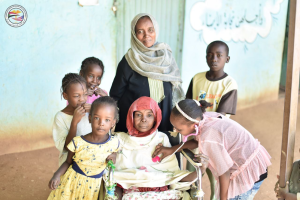Sudan Civil War: History & Implications [6 Root Causes]
Sudan, a nation of rich cultural diversity and historical significance, has been deeply scarred by a tumultuous history marked by internal conflicts. The term “Sudan Civil War” encompasses a series of protracted struggles that have shaped the nation’s trajectory over several decades. This comprehensive exploration aims to delve into the roots, phases, and ongoing implications of the Sudan Civil War, seeking to provide a nuanced understanding of this complex and enduring conflict.
What is happening in South Sudan?
To comprehend the intricacies of the Sudan crisis, it is imperative to navigate through its colonial past. From 1899 to 1956, Sudan was jointly administered by the British and Egyptians. The post-independence era witnessed a struggle for power and resources, with the divide between the Arab-Muslim north and the non-Arab, predominantly Christian or animist south emerging as a significant fault line.
The nascent nation’s early governments grappled with the challenge of harmonizing the diverse interests of its populace, leading to a series of conflicts and discontent. The seeds of the Civil War in Sudan were planted during these formative years, culminating in a series of struggles over ethnic, religious, and economic disparities.
First Sudanese Civil War (1955-1972)
The first significant eruption of violence occurred in 1955, even before Sudan gained full independence. The southern regions, feeling marginalized, rebelled against the central government in Khartoum. This marked the onset of the First Sudanese Civil War, a conflict that persisted until 1972. The Addis Ababa Agreement brokered during this period and granted autonomy to the south, temporarily quelling hostilities.
Renewed Tensions and the Second Civil War (1983-2005)
The fragile peace established by the Addis Ababa Agreement disintegrated in 1983 when the Sudanese government, under President Gaafar Nimeiry, annulled the autonomy of the south and imposed Islamic law (Sharia) nationwide. This seismic shift reignited hostilities, giving rise to the Second Sudanese Civil War, a devastating conflict that spanned over two decades.
The Sudan People’s Liberation Army/Movement (SPLA/M), led by John Garang, emerged as a key player in the conflict, advocating for southern independence. The war witnessed egregious human rights violations, including mass displacement, famine, and atrocities committed by both sides. Regional dynamics also played a role, with neighboring countries becoming entangled in various ways.
What are Some of the Causes of the Second Sudanese Civil War:
The Second Sudanese Civil War, which spanned from 1983 to 2005, had multiple complex causes rooted in historical, political, economic, and social factors. Some of the key causes include:
1. Religious and Ethnic Differences:
The conflict was fueled by long-standing religious and ethnic divisions between the Arab Muslim-dominated government in Khartoum and the predominantly Christian and animist populations in the southern regions of Sudan.
2. Resource Allocation and Marginalization:
The southern regions, rich in natural resources, felt marginalized and economically disadvantaged. Disparities in resource allocation and development projects exacerbated tensions between the central government and the southern populations.
3. Islamic Sharia Law:
The imposition of Islamic Sharia law by the Sudanese government in 1983 heightened discontent in the predominantly non-Muslim southern regions, contributing to a sense of cultural and religious oppression.
4. Political Marginalization:
Southern Sudanese felt politically marginalized and underrepresented in the national government. The lack of political inclusivity and representation fueled a desire for autonomy.
5. Armed Rebellion:
The Sudan People’s Liberation Army/Movement (SPLA/M), led by John Garang, emerged as a key rebel force fighting for the autonomy of the southern regions. The conflict escalated into a full-scale civil war, marked by extensive violence and displacement.
Donate Now and be the change Sudan needs!
Stand with Sudan, Save Lives!

Comprehensive Peace Agreement (2005)
The turning point in the conflict came in 2005 with the signing of the Comprehensive Peace Agreement (CPA) between the Sudanese government and the SPLA/M. The agreement granted the South a six-year period of autonomy, after which a referendum on independence would be conducted. This historic accord set the stage for the establishment of the semi-autonomous region of South Sudan.
Independence of South Sudan (2011)
In 2011, the people of South Sudan voted overwhelmingly for independence in a referendum, leading to the formal establishment of the Republic of South Sudan. While this marked the end of the Second Sudanese Civil War, it also gave rise to new challenges, including internal conflicts within South Sudan itself.
Sudan Civil War 2023
Despite the secession of South Sudan, internal conflicts persisted in the Sudan War 2023. The Darfur region, situated in the west, has been a focal point of violence and mass displacement. The Darfur conflict, which gained international attention in the early 2000s, is rooted in disputes over resources, ethnicity, and political power.
The Sudanese government’s response to rebel movements in Darfur escalated into a humanitarian crisis characterized by allegations of genocide, displacement, and widespread atrocities. The conflict, though distinct in dynamics from the north-south struggle, underscores the deep-seated challenges of governance, resource distribution, and identity that continue to plague Sudan.
Regional Dynamics and International Involvement
The Sudan Civil War has not unfolded in isolation; rather, regional dynamics and international involvement have played pivotal roles. Neighboring countries, including Chad and Ethiopia, have been drawn into the conflict at various points, either as mediators or as active participants. The international community, including the United Nations and the African Union, has grappled with the complexities of peacekeeping, Sudan emergency relief fund, and diplomatic intervention.
Root Causes and Persistent Challenges
The root causes of the Sudan Civil War are deeply embedded in historical, social, and economic factors. Issues of governance, religious identity, and resource allocation have fueled and perpetuated conflicts. Persistent challenges include the need for comprehensive and inclusive governance, equitable resource distribution, and addressing the long-lasting scars of conflict, including displacement, trauma, and economic disparity.
Impact on Civilians and Societal Fabric
Beyond the geopolitical and diplomatic dimensions, it is essential to examine the human toll of the Sudan Civil War. Civilians have borne the brunt of the violence, facing displacement, loss of livelihoods, and the trauma of conflict. Families have been torn apart, communities upended, and the societal fabric irreversibly altered.
The protracted nature of the conflict has resulted in a generation that has grown up amid violence, hindering educational opportunities and perpetuating cycles of poverty. The psychological impact on individuals, particularly children who have witnessed and experienced conflict, raises profound concerns about the long-term well-being of Sudanese society.
Related Post: What is happening in Sudan?
DONATE via STRIPE
What Were the 3 Causes of the Civil War in Sudan?
The root causes of the Sudanese Civil War are multifaceted, stemming from a combination of historical, political, economic, and social factors. Here are the 3 causes of the civil war in Sudan (3 Additional causes):
1. Ethnic and Religious Diversity:
Sudan is characterized by a diverse population with various ethnicities and religious affiliations. The Arab-Muslim majority in the north contrasts with the predominantly Christian and animist communities in the south. These differences have historically fueled tensions.
2. Colonial Legacy:
The legacy of British and Egyptian colonial rule left a lasting impact on Sudan. Arbitrary borders drawn without regard to ethnic or cultural boundaries contributed to internal divisions and conflicts.
3. Economic Disparities:
Disparities in economic development between the more affluent North and the economically marginalized South have been a source of contention. The unequal distribution of resources and opportunities exacerbated regional tensions.
4. Political Marginalization:
Southern Sudanese communities often felt politically marginalized by successive governments dominated by northern elites. Political power imbalances and lack of representation contributed to grievances and rebellions.
5. Religious Differences:
The imposition of Islamic law in the predominantly Christian and animist south by northern governments heightened religious tensions. The attempt to homogenize the country’s legal and cultural framework fueled resistance.
6. Oil Resources:
The discovery of oil in Sudan added a new dimension to the conflict, as competition for control over oil-rich regions intensified. Disputes over resource allocation further fueled hostilities.
Conclusion
The Sudan War, with its historical intricacies, phases, and ongoing regional dynamics, represents one of Africa’s most protracted and complex conflicts. While the secession of South Sudan marked the formal end of the Second Sudanese Civil War, internal conflicts and humanitarian crises persist. The path forward requires a holistic approach that addresses the root causes, promotes inclusive governance, and fosters reconciliation among Sudan’s diverse population.
As Sudan navigates its post-conflict era, the international community’s role remains crucial in supporting sustainable peace, development, and the healing of a nation scarred by decades of internal strife. The story of Sudan is not just one of conflict; it is also a narrative of resilience, survival, and the enduring hope for a future where the promise of a united and prosperous nation can replace the pains of the past. In unraveling the complexities of Sudan’s civil wars, we are confronted not only with the scars of history but also with the imperative to forge a path toward lasting peace and stability in the region. Donate to SAPA now and make a lasting impact.






